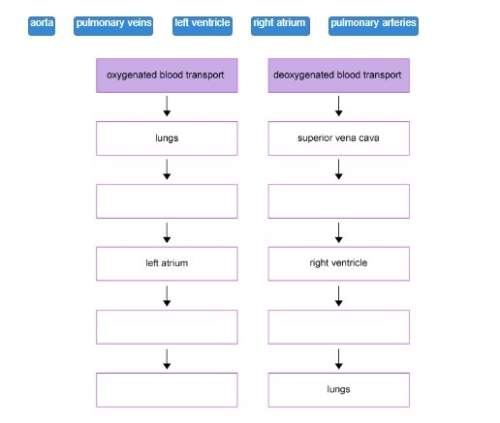
Biology, 02.09.2020 14:01 veronica25681
Step 1: Visible Craters The first few craters you’ll visit are nice, round, and easy to spot. Find each one and then describe them in the table. Remember to select the crater name. Crater Description Lonar Crater, India (Asia) Roter Kamm Crater, Namibia (Africa) Gosses Bluff Crater, Northern Territory (Australia) 1. What similarities do these craters have? Step 2: Invisible Craters Some of the craters on Earth are not very visible. They have been covered by water or eroded over time. Special kinds of maps called gravity maps can tell you more about these hidden craters. Select the name of the crater to see these maps. Crater Description How is it hidden? Chesapeake Bay, United States (North America) Chicxulub Crater, Mexico (North America) Morokweng Crater, South Africa (Africa) Step 3: Young Craters Not all craters are the same age. For a long time during the early formation of the solar system, meteorites bombarded Earth. Take a look at some of the younger craters. Find each one and then describe them in the table. Remember to select the crater name. Crater Age Description Kaalijärv Crater, Estonia (Europe) 4,000 years old Wolfe Creek Crater, Western Australia (Australia) 300,000 years old Step 4: Old Craters The oldest craters on Earth are also some of the largest. You may have to zoom out on your map to see the whole crater. Be sure to click the name of the crater, too. Crater Age Description Sudbury Basin, Ontario, Canada (North America) 1,850,000 years old Vredefort Crater, South Africa (Africa) 2,023,000,000 years old 2. What differences did you notice between the old and young craters? Step 5: Odd-Shaped Craters Although each famous crater looks different, they have the same basic circular shape. Visit the Rio Cuarto craters in Argentina (South America). Zoom in to see these oval-shaped craters. 3. What is the controversy surrounding these craters? What do you think? Step 6: Tourist’s Choice! You have seen a lot of craters! Now it’s your turn to choose a crater to visit. Select any continent and any famous crater. Describe your crater. Is it old or young? Visible or invisible? Is it dry as the desert or filled with water? 4. Which crater (or craters) did you visit? 5. Describe your crater’s age, size, and appearance.

Answers: 3
Another question on Biology

Biology, 21.06.2019 17:50
Aeukaryotic cell must be from a plant if the cell a) a nucleus b) a nuclear envelope c) cytoplasm d) a cell wall
Answers: 1

Biology, 21.06.2019 21:30
In which case would a scientist choose to use a dissecting microscope rather than a compound microscope
Answers: 3

Biology, 22.06.2019 04:00
Will mark brainliest i only need the ! 1.use ten beads and a centromere of one color to construct the long chromosome. use ten beads and a centromere of a second color to construct the second chromosome in the long pair. make a drawing of the chromosomes in the space below. 2. for the second pair of chromosomes, use only five beads. 3. now model the replication of the chromosomes. make a drawing of your model in the space below. part b: meiosis i during meiosis i, the cell divides into two diploid daughter cells. 4. pair up the chromosomes to form tetrads. use the longer tetrad to model crossing-over. make a drawing of the tetrads in the space below. 5. line up the tetrads across the center of your “cell.” then model what happens to the chromosomes during anaphase i. 6. divide the cell into two daughter cells. use the space below to make a drawing of the result. part c: meiosis ii during meiosis ii, the daughter cells divide again. 7. line up the chromosomes at the center of the first cell, one above the other. separate the chromatids in each chromosome and move them to opposite sides of the cell. 8. repeat step 7 for the second cell. 9. divide each cell into two daughter cells. use the space below to make a drawing of the four haploid cells
Answers: 1

Biology, 22.06.2019 06:30
Zoo geographic regions are characterized by the presence of specific groups of animals these regions are determined by the taxonomic or phylogenetic relationships of animals. the map shows the zoogeographic regions proposed by the naturalist alfred russel wallace in 1876. the similarities of organisms in which two areas numbered above provide the best evidence for common ancestry between the organisms in both locations ?
Answers: 3
You know the right answer?
Step 1: Visible Craters The first few craters you’ll visit are nice, round, and easy to spot. Find e...
Questions


Physics, 24.01.2022 08:30

Chemistry, 24.01.2022 08:30

Chemistry, 24.01.2022 08:40

Social Studies, 24.01.2022 08:40


Mathematics, 24.01.2022 08:40

Mathematics, 24.01.2022 08:40



Mathematics, 24.01.2022 08:40



Mathematics, 24.01.2022 08:40

Mathematics, 24.01.2022 08:40



Mathematics, 24.01.2022 08:40

Geography, 24.01.2022 08:40

Physics, 24.01.2022 08:40




